- News
- Reviews
- Bikes
- Components
- Bar tape & grips
- Bottom brackets
- Brake & gear cables
- Brake & STI levers
- Brake pads & spares
- Brakes
- Cassettes & freewheels
- Chains
- Chainsets & chainrings
- Derailleurs - front
- Derailleurs - rear
- Forks
- Gear levers & shifters
- Groupsets
- Handlebars & extensions
- Headsets
- Hubs
- Inner tubes
- Pedals
- Quick releases & skewers
- Saddles
- Seatposts
- Stems
- Wheels
- Tyres
- Tubeless valves
- Accessories
- Accessories - misc
- Computer mounts
- Bags
- Bar ends
- Bike bags & cases
- Bottle cages
- Bottles
- Cameras
- Car racks
- Child seats
- Computers
- Glasses
- GPS units
- Helmets
- Lights - front
- Lights - rear
- Lights - sets
- Locks
- Mirrors
- Mudguards
- Racks
- Pumps & CO2 inflators
- Puncture kits
- Reflectives
- Smart watches
- Stands and racks
- Trailers
- Clothing
- Health, fitness and nutrition
- Tools and workshop
- Miscellaneous
- Buyers Guides
- Features
- Forum
- Recommends
- Podcast
BUYER'S GUIDE
 2023 Shimano 12-speed GRX
2023 Shimano 12-speed GRXYour complete guide to Shimano’s GRX gravel groupset
This article contains links to retailers. Purchases made after clicking on those links may help support road.cc by earning us a commission.
Shimano GRX is a component series designed for gravel and adventure riders, bikepackers and cyclocross racers, providing a wide spread of possible builds including 10-speed, 11-speed and 12-speed setups, 1x and 2x drivetrains, mechanical and electronic shifting, wide-range or close-range gears, and dropper post integration.
In 2019, Shimano announced GRX, the "world's first dedicated gravel component group" which combines key technologies and components from road and mountain bike groupsets with some added brand new parts that should be ideal for your gravel bike.
Below we've tried to compile everything you need to know about the groupset giant's gravel-specific drivetrains. If you're looking for advice on Shimano's road bike components then fear not, just head over to our complete guide to Shimano road bike groupsets instead!
Firstly, GRX is divided into three different levels:
RX800 series
- Equivalent to the Shimano Ultegra road bike groupset
- 12-speed and 11-speed
- Mechanical and electronic (Di2) shifting
RX600 series
- Equivalent to the Shimano 105 road bike groupset
- Mainly 11-speed and 12-speed (although there is a 10-speed RX600 chainset too)
- Mechanical shifting only
RX400 series
- Equivalent to the Shimano Tiagra road bike groupset
- 10-speed
- Mechanical shifting only
That's all simple enough, but things are complicated by the fact that you can't get every component at every level. You can't have a complete RX600 groupset because there's no such thing as an RX600 rear derailleur. For instance, if you want an 11-speed mechanical rear derailleur you need to go for the RX800 level. In other words, you sometimes have to mix and match.
Things are further complicated by the fact that, at the time of writing, you can only get the new 12-speed GRX with mechanical shifting. We assume a Di2 version will follow, but for now GRX Di2 is 11-speed only.
With all that said, if GRX is for you it's easiest to decide first whether you want 12-speed mechanical, 11-speed Di2, 11-speed mechanical or 10-speed mechanical. This is the way that Shimano structures everything on its website, and we've followed this in our guide to each groupset and their variants below.
Not surprisingly given GRX's intended use, you get hydraulic disc brakes across the board. Cassette and chain options come from current road (Ultegra, 105, Tiagra) and mountain bike (XT, SLX, Deore) groupsets.
12-speed
Buy now: Shimano GRX 820 1x12 groupset for £1,239.00 at Wiggle
Buy now: Shimano GRX 820 2x12 groupset for £1,239.00 at Wiggle
12-speed GRX is the newest update to Shimano's gravel shifting range, providing more gearing options but sticking to mechanical shifting. It's available in both 1x and 2x setups and there are options under the top-end 800 series (called RX820) and the more affordable 600 variant (called RX610).
Shimano have named the new RX820 groupsets 'Unbeatable', 'Unstoppable' and 'Undroppable' - in reality the first two are both the same new 800-series, 1x12 version of the groupset with different cassette and derailleur options, while the latter is the single 2x12 version of RX820.
The 600-series RX610 components haven't been given a fancy name, but at this tier you essentially have new RX610 cranksets and shifters to make your groupset more affordable.
12-speed GRX is the newest update to Shimano's gravel shifting range, providing more gearing options but sticking to mechanical shifting.
It's available in both 1x and 2x setups and there are RX800 configurations and a more affordable RX600 variant.
The GRX 800 series chainset is available 2x with 48/31-tooth chainrings and 1x with either a 42-tooth or 40-tooth chainring, available with 170mm, 172.5mm or 175mm cranks and each retailing at £230.
The GRX 600 series chainset is available 2x with 46/30-tooth chainrings, and 1x with a 40-tooth chainring, priced at £150.
The 2x setups are compatible with an 11-34T or 11-36T cassette which retails for £85 and the 1x setups can be combined with a 10-45T or 10-51T cassette which are £160.
The key difference between the GRX 800 chainsets and the GRX 600 chainsets is that GRX 800 uses Shimano's Hollowtech II hollow crank arm technology to reduce weight.
> Gravel bikes — do we actually need them?
For the 1x setups you have the option of the RX822 medium or long cage rear derailleur, equipped with the integrated Shadow RD+ chain stabiliser, which are priced at £119.99 each.
The RX820 rear derailleur for the 2x setup is also priced at £119.99 and features the same Shadow RD+ chain stabiliser. The RX820 front derailleur is priced at £54.99.
> Shimano unveils 12-speed mechanical 105 R7100 groupset to sit alongside existing Di2
12-speed GRX comes with revamped shifters and brake levers which are optimised for flared drop bars.
Shimano offers dedicated GRX STI (combined shift and brake) levers and you can buy them separately as well as in sets.
The 820-series shifter and disc brake set will cost you between £330 and £350, while the 610-series shifter and disc brake set costs between £260 and £280.
The complete groupset prices are:
- Shimano GRX 820 1x12 - RRP £1,349
- Shimano GRX 820 2x12 - RRP £1,349
- Shimano GRX 610 2x12 - RRP £1,064
11-speed
Shimano's GRX 11-speed is currently the only Di2 shifting gravel groupset offered by Shimano, although it is also available with mechanical shifting.
11-speed GRX has 1x and 2x setups in both the RX810 series and RX600 series.
> Check out the best gravel bikes 2023
For 1x 11-speed mechanical GRX the cranksets come in two variations - RX810 (40T or 42T) both with an RRP of £219.99, or RX600 (40T) which has an RRP of £129.99.
For 2x 11-speed mechnical GRX, there are also two models available - 48-31T (RX810) for £219.99, or 46-30T (RX600) for £134.99. For both 1x and 2x setups, it is worth considering that the 810-series will give the highest gear ratios.
Di2 11-speed GRX has 1x and 2x setups but belongs to the 810-series only meaning you have the option of a 40T or 42T crankset for 1x, and a 48-31T crankset for 2x.
For 11-speed GRX there's one derailleur with a long cage, belonging to the RX810 groupset which offers a range of 11-42T for 1x setups and a derailleur from 2x groupsets takes a maximum 11-34t cassette.
Mechanical and electronic GRX rear derailleurs are available and all of them use Shimano's Shadow RD+technology.
For Di2 groupsets the RX815 rear derailleur retails at £277.99 and the RX817 rear derailleur is £309.99. For mechanical shifting, the RX810 and RX812 rear derailleurs both retail at £109.99.
For 2x setups you can have an 11-speed GRX groupset with either a mechanical or electronic front derailleur.
Compared to regular road front derailleurs, the GRX front derailleurs have an additional 2.5mm outboard clearance to provide space for wider tyres, up to 42mm and for this reason the front mech must be used with the matching GRX chainset.
Again, only available in the 800-series, the Di2 RX815 front derailleur retails at £219.99 and the mechanical RX810 front derailleur retails at £54.99.
> road.cc Recommends: gravel and adventure bikes
The 11-speed levers also offer Shimano's dedicated GRX STI technology (combined shift and brake).
The 800-series lever is available for Di2 and mechanical groupsets retailing at £244.99 and £239.99 respectively and Shimano also offers a mechanical shift RX810 left lever that, when used with a 1x11 drivetrain, can control a dropper seatpost, costing £224.99.
There is also a 600-series lever which retails at £189.99.
Shimano GRX also includes 1x11-specific BL-RX810 and BL-RX600-series left side hydraulic disc brake levers with no dropper or shift internals.
You can also buy STI levers and brake calipers in sets with one option for Di2 groupsets and two options for mechanical.
For Di2 groupsets the ST-RX815/BR-RX810 set retails at £344.99 and for mechanical 11-speed, the ST-RX810/BR-RX810 set is £339.99 and ST-RX600/BR-RX400 set is £249.99.
The complete groupset prices are:
- Shimano GRX RX815 Di2 1x11 - RRP £1,879.99
- Shimano GRX RX815 Di2 2x11 - RRP £2,199.99
- Shimano GRX RX800/600 mechanical 1x11 - RRP £909.99
- Shimano GRX RX810 mechanical 2x11 - RRP £1,049
- Shimano GRX RX600 mechaincal 2x11 - RRP £855.99
10-speed
Shimano GRX still offers 10-speed mechanical groupset which is only available as a 2x setup, using components primarily from the cheapest GRX subgroup - RX400.
There is no GRX 400 series chainset. Instead, there's a RX600 10-speed chainset with 46/30-tooth chainrings which retails at £109.99.
The RX400 rear derailleur offers a range of 11-36T and costs £64.99 and the RX400 front derailleur retails at £39.99.
> Check out 10 Shimano GRX bikes you can buy now from Canyon, Bianchi, Scott, Giant, Trek and more
As with the 12-speed and 11-speed groupsets, 10-speed levers use Shimano's dedicated GRX STI technology (combined shift and brake) and are available to buy on their own or as a set with brake calipers.
A 400-series lever retails at £145 while the ST-RX400/BR-RX400 lever and brake caliper combo costs £239.99.
Complete groupsets are now more difficult to find but are priced at around £600.
For more details on Shimano groupsets, check out Shimano's website.
Explore the complete archive of reviews of groupsets on road.cc
About road.cc Buyer's Guides
The aim of road.cc buyer's guides is to give you the most, authoritative, objective and up-to-date buying advice. We continuously update and republish our guides, checking prices, availability and looking for the best deals.
Our guides include links to websites where you can buy the featured products. Like most sites we make a small amount of money if you buy something after clicking on one of those links. We want you to be happy with what you buy, so we only include a product if we think it's one of the best of its kind.
As far as possible that means recommending equipment that we have actually reviewed, but we also include products that are popular, highly-regarded benchmarks in their categories.
Here's some more information on how road.cc makes money.
You can also find further guides on our sister sites off.road.cc and ebiketips.
road.cc buyer's guides are maintained by the road.cc tech team. Email us with comments, corrections or queries.
Mat has been in cycling media since 1996, on titles including BikeRadar, Total Bike, Total Mountain Bike, What Mountain Bike and Mountain Biking UK, and he has been editor of 220 Triathlon and Cycling Plus. Mat has been road.cc technical editor for over a decade, testing bikes, fettling the latest kit, and trying out the most up-to-the-minute clothing. He has won his category in Ironman UK 70.3 and finished on the podium in both marathons he has run. Mat is a Cambridge graduate who did a post-grad in magazine journalism, and he is a winner of the Cycling Media Award for Specialist Online Writer. Now over 50, he's riding road and gravel bikes most days for fun and fitness rather than training for competitions.
Latest Comments
- aramaerospace 26 min 11 sec ago
Increased drive friction and power loss:...
- Geoff H 2 hours 33 min ago
I was really enjoying the article until I came to the price!
- OldRidgeback 3 hours 26 min ago
I have a very old MTB (guess what make) that I'll happily leave locked at the train station or shops or whatever. The fairly new Trek MTB or...
- TheBillder 5 hours 58 sec ago
Dualling that stretch of the A7 will allow hard-pressed motorists to travel very slightly faster between the rock that is the Sherriffhall...
- BikingBud 5 hours 8 min ago
I refer to being an engineer only to emphasise my consideration of the logical approach that should be applied in the justice system, rather than...
- David9694 6 hours 39 min ago
Parking fail as car left teetering on top of stone wall Oh dear https://www.devonlive.com/news/local-news/parking-fail-car-left-teeterin...
- jaymack 7 hours 57 min ago
We must be related!
- The_Ewan 9 hours 27 min ago
But why worry if a few people do? It's just not a big deal....
- Tom_77 10 hours 31 min ago
Tempted to get him a sweary birthday cake like in The Thick Of It....
- Bigtwin 10 hours 59 min ago
Didn't happen did it? They came into my shop a couple of years back and said it was "on the way", but never heard anything more.
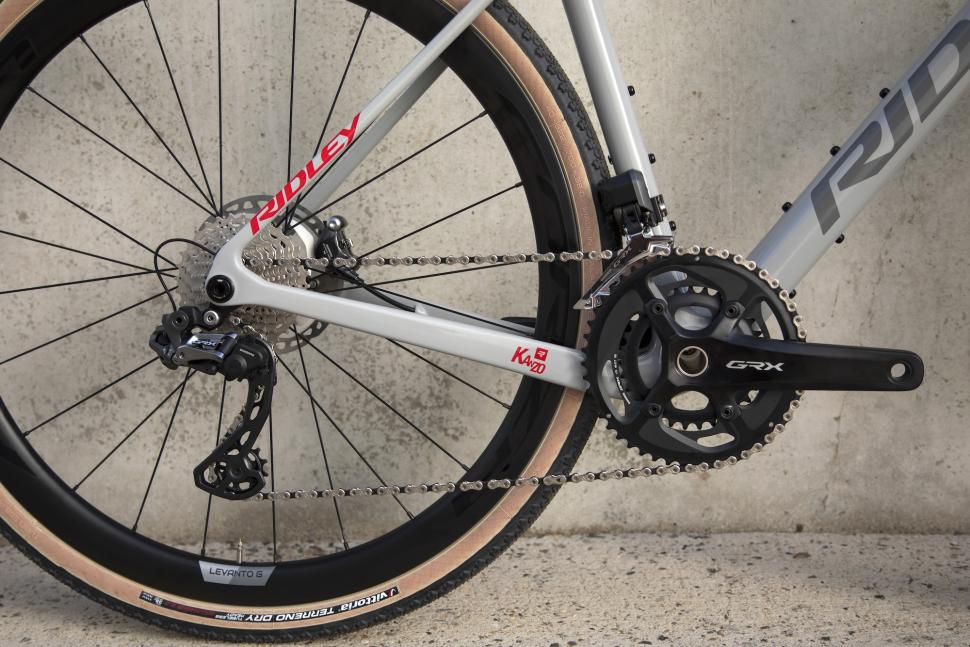

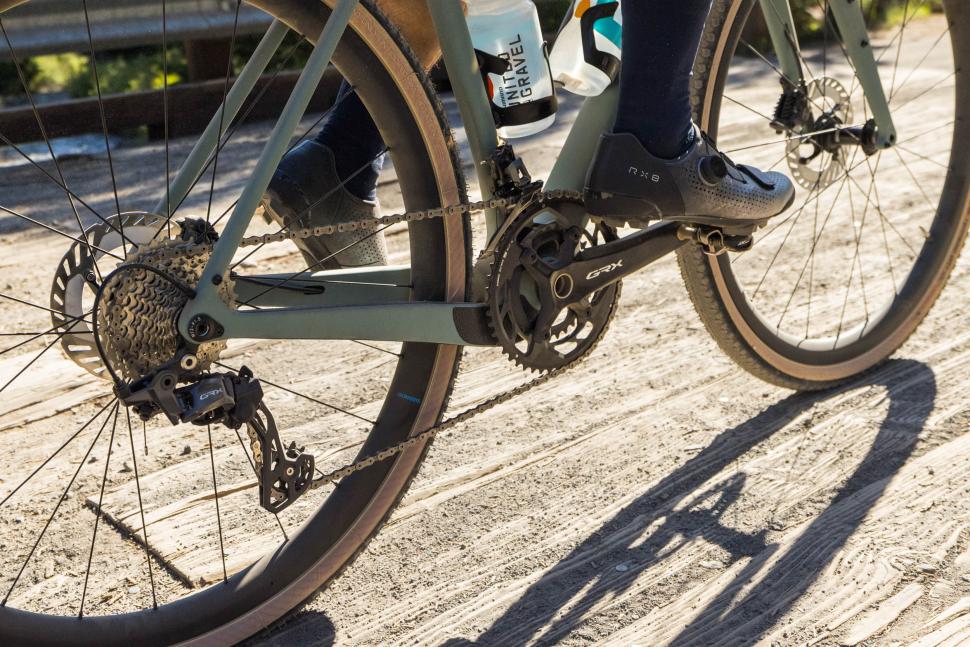


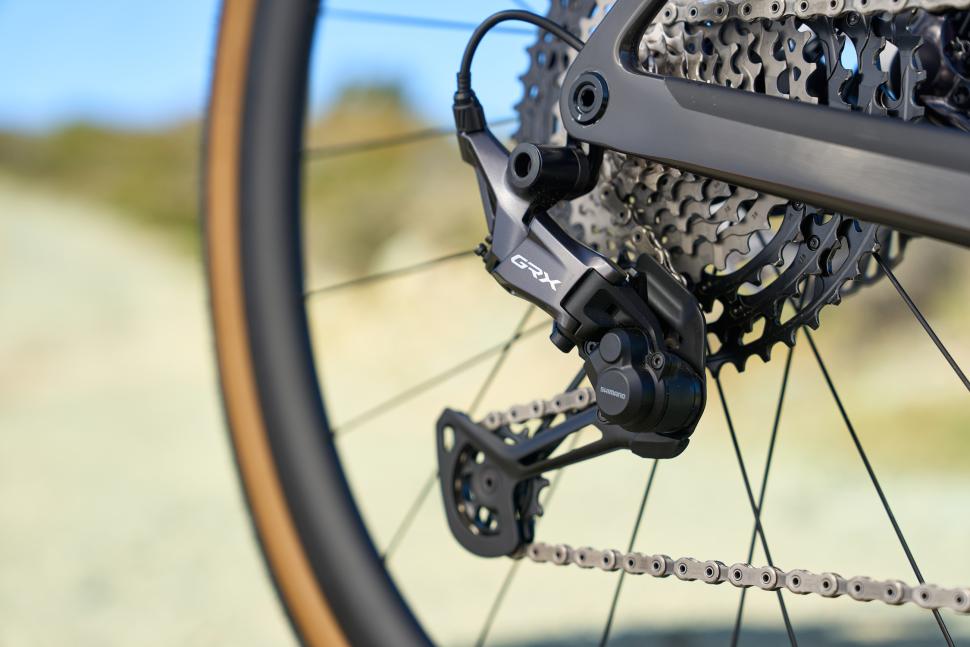
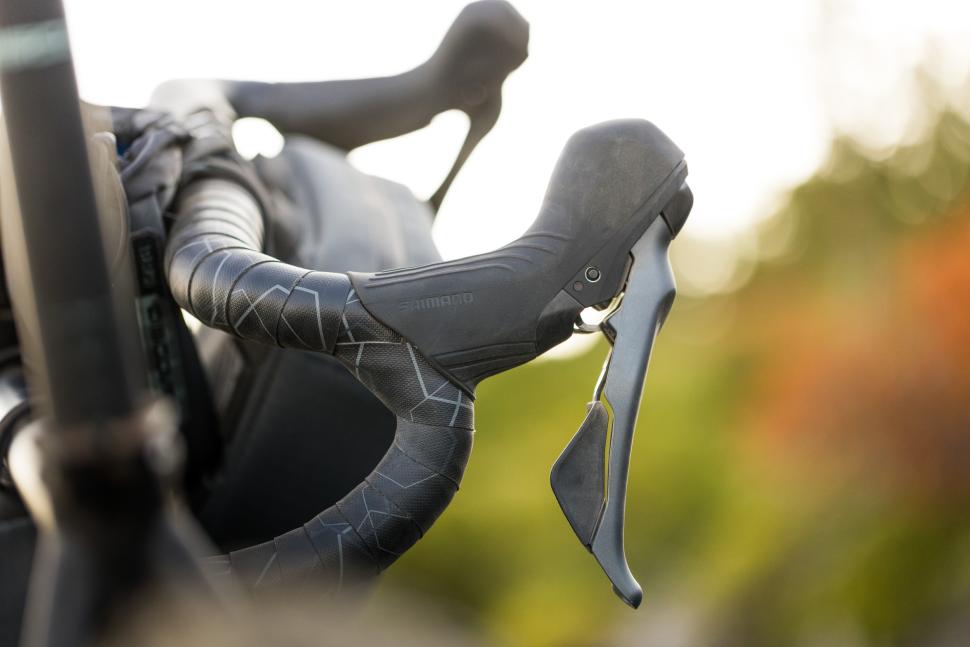
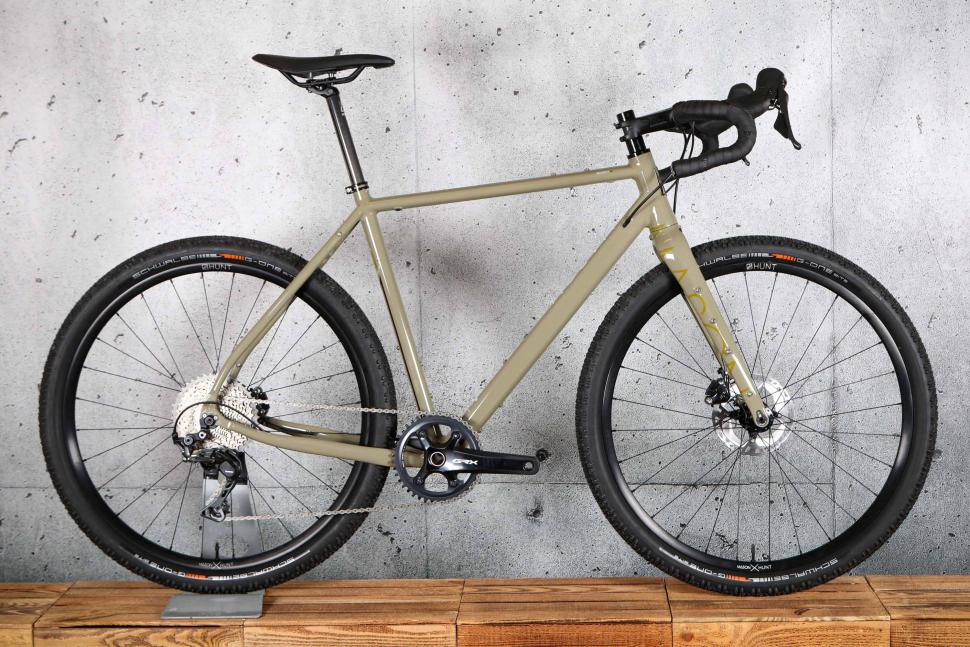
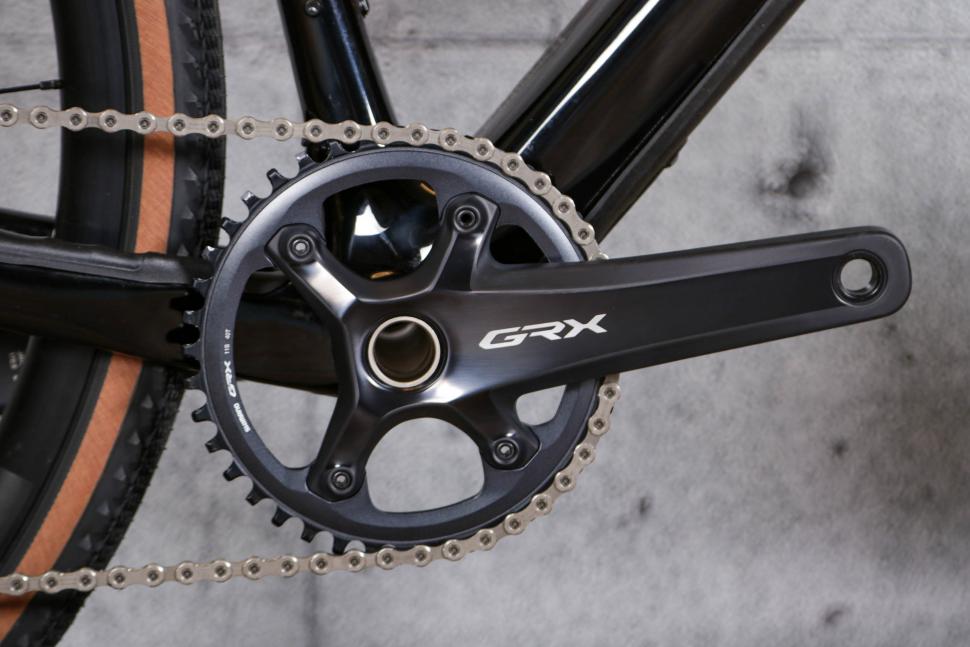
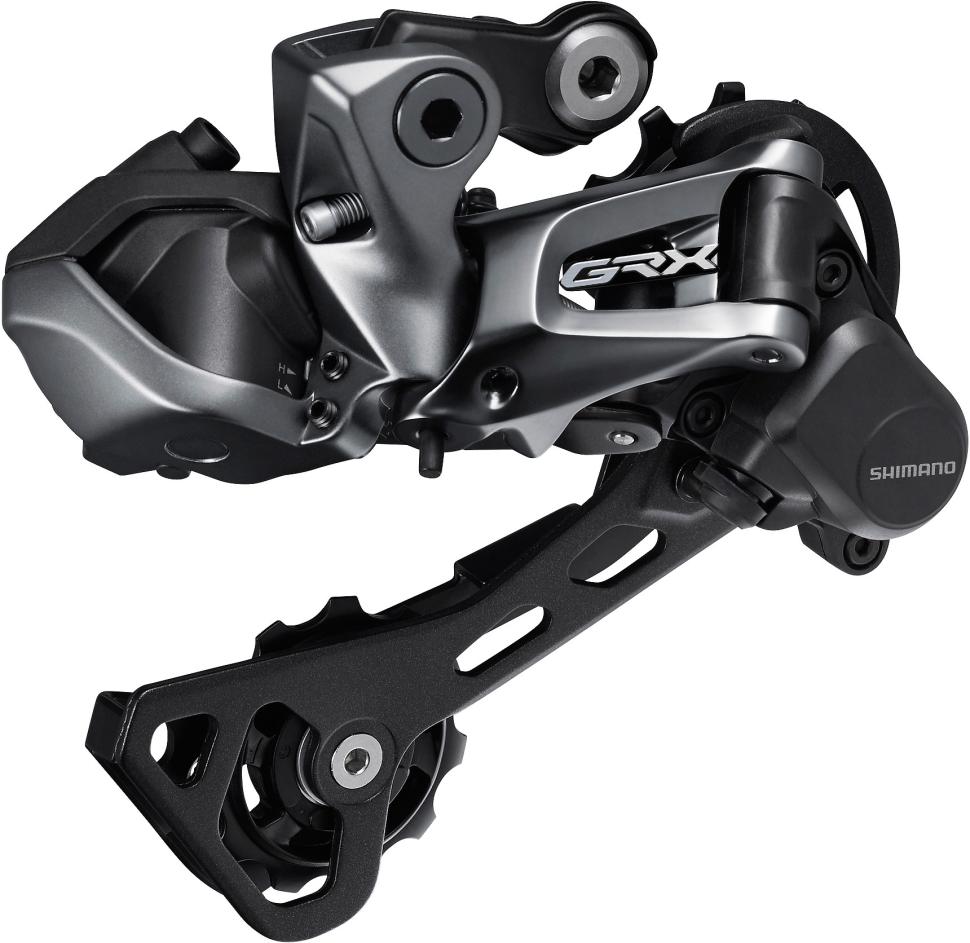


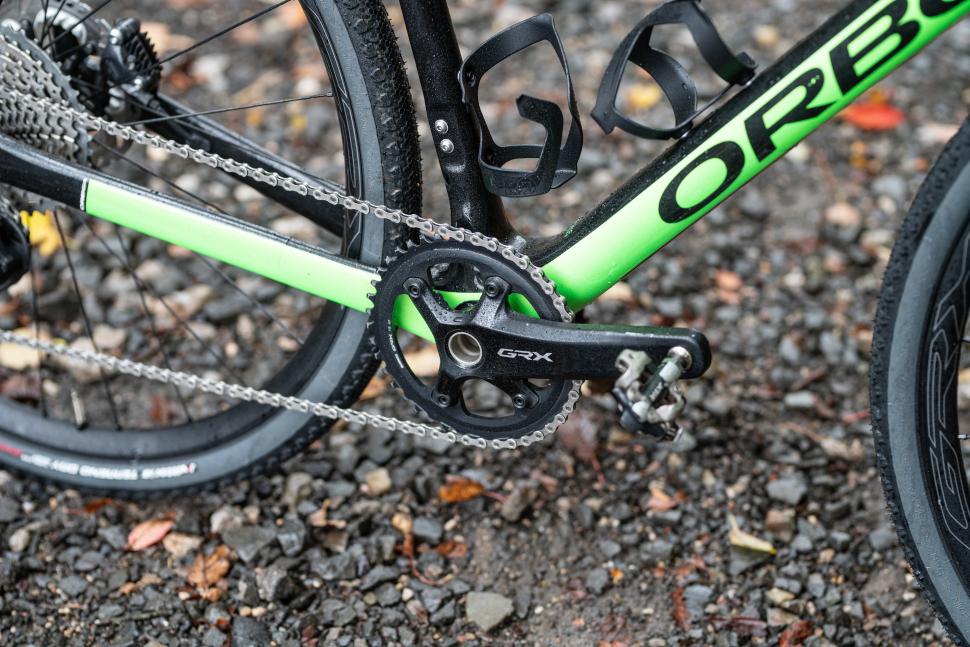


Add new comment
15 comments
I've been using my 1x GRX600 set-up for around 6 months now and am thoroughly impressed - braking and changing is faultless. I was a bit initally worried about range etc, but coming from an MTB background was happy with the choice of 1x and despite using my gravel bike as a rigid MTB I still haven't come across anything the bike wouldn't get up (saying nothing about me though!).
I think for many you hit the nail on the head at the end, I also think it lacks a low wide range to make it really great for all users. Odd really as their marketing for MTB double and triple over 1x has been centered on this point.
This weekend I will build a bike with what I thought would be full GRX but in the end it is only 3 parts from GRX - GRX 600 shifters/hope calipers, GRX 810 front gear, GRX 600 46/30 chainset, rear gear is long cage XT 11s mated with 11 - 42 XT cassette, a wolftooth Tanpan by the bars to convert the cable pull.
The 11s XT SGS is the only rear gear with the capacity to cover that gear spread.
The Hope calipers are because I trust them long term more than Shimano. My fingers have been burnt with too many wandering bite points and apparently leaky caliper pistons on Shimano MTB brakes, SLX, XT and XTR.
I had wanted to stick GRX on my Ridley X-Night cyclocross bike as I wanted to update the groupset and give myself better ratios. Currently running 46/36 and 12-28 10spd, though the frame and hub accept 11spd.
I use the bike for two extremes; winter roads, and summer mountain trails - have had to abort using it on some of those and revert to a mountain bike (or walk parts) due to the steepness.
So the ability to put 46/30 GXR600 crankset on front and pair it with an 11-42 cassette was absolutely ideal for me. It gives a bigger gear than I currently have, a much lower gear than I currently have, and although it might feel there's "gaps" in the ratios, it'll be 22 speed over my current 20 setup so I don't think I'll mind too much. The extremes mean more to me than having a 2 or 3-tooth jump somewhere in the middle.
But my bike shop have said I can't do this? That the maximum cassette sprocket at the back is the 11-34.
Yet you seem to have done it based on your comment below, is that correct?
I figured the whole point of GRX was brining some of that MTB flexibility to the offroad race bike (as well as the clutch) and therefore different sizes of rear cage and derailleur would be part of that.
Shimano's own website doesn't explicitly state this is 1x only, nor explain. At the page here -> https://bike.shimano.com/en-US/product/component/grx-11-speed.html it lists all your part options (since they don't do a set 600 groupset for example, you mix parts, choose your cassette, rear derailleur etc). And from that it suggests I could used FC-RX600-11 2x11 crankset 46/30 and the Deore cassette CS-M8000 which actually goes up to 46 largest sprocket.
It lists further down the rear derailleur options, one of which is RD-RX812 - "GRX Rear Derailleur 11-speed (42T max low sprocket)".
The bit that determines the fact that the 812 is 1x only is not the max tooth size but the max capacity (31t). Capacity is Big-little on both rear and front.
For 1x thats 42-11 = 31 + 0 (no front difference) = 31 max capacity.
The 810 (2x) mech has a Max sprocket of 34 and a max capacity of 40 which fits with (34-11)+ (48-31) = 23 + 17 = 40
In reality there's probably some leeway in both mechs - especially with extra long b-screws and wolftooth links, but unless you are diehard 1x you will get much better range from experimenting with 2x. 36 by 31 low gear using a SRAM cassette 36-11 is probably achievable with careful set up, without mods.
Have a full set of GRX 800 here just waiting for a frame to turn up to fit it to.
As an update to what I wrote, the 2x GRX/XT mix with a tanpan inline converter is still working perfectly for me. The only thing I adjusted once assembled was to back off the XT clutch tension from the setting it was shipped with, this improved the shift quality a huge amount.
Other points, the GRX 600 shifters are almost identical to 105 7000 series. Only the lever is a little different. The talk of redesigned hoods does not apply to the 600 series.
Hope RX4 calipers, brilliant but require some care to set up and bleed initally.
When I change the gear cables I will use a non coated non shimano one, the tanpan holes are small and strip the soft coating off the shimano cable easily.
6 months on the only thing I would like is if the GRX 600 series chainset was not so heavy, that is Claris or Sora level really. (The GRX 800 is a bigger gear range that goes beyond what the XT can handle with 11-42.)
All the cranks within the same GRX series share the same arms. The difference lies in the chainrings (number of teeth, and spacing for either 1x or 2x). So you can outfit a GRX 800 crankset with your current chainrings.
That only works if I also change the chainrings, GRX800 double is a different ratio to GRX600 double, it would take my set up over the capacity of the XT RD I am using.
They may look low rent but many KMs later the full set up is still running well.
I have a Trek Checkpoint with 46/30 and hence the longer cage 810 mech. An 11-40 went straight on with no adjustment whatsoever and works perfectly
I'm wanting to build a flat bar or more likely a Jones H-Loop bar gravel bike this year, probably based on an Enigma frame. It would be more road oriented than gnarly offroad and I'm not looking for a MTB replacement. MTB drivetrains are too low geared. I think the 48 / 30 option of GRX and a dinner plate cassette gear option would suit me.
Q - Would the 11 speed GRX work with 11spd MTB flat bar shifters?
I apologise that I cannot come anywhere close to answering your specific question Munge, but I will say that I have nothing but good things to say about the Jones H-loop. It was a shockingly expensive step (I just had to go Ti) but I am so glad I did it. You will want to have a long steerer though, it benifits from being a bit high. I have a full set of Chris King spacers under mine.
I went 660mm as I wanted the narrower version as I will be going through traffic, and the longer grips are pricey, and I did have to cut one down for the rohloff gripshifty thing. The bikemonger (Still Charlie back then) had no Ti so I got everything direct from Jones.
I've just fitted one. Went for the basic standard guage version as weight not really an issue on my MTB. I just wanted to try one before commiting fully to the concept. Setting it up was easy, I had to swap out my stem, but fortunately had a slightly shorter one of the correct diameter. The controls on the left hand bar need slightly longer cables, but apart from that it was a straight forward swap.
First use today, it's different but first impressions are that the hand position feels very natural. Controls are easy to reach, loads of bar space for accesories. Maybe I'll fit a tea tray, you know "to be one of the lads". It might look a bit weird but sort of quirky in a good way. I can pretend that it is a bull bar in case of my next rear end collision.
https://imgur.com/j1JErAM
A - no. 11spd MTB cable pull is ~1.1 and road (inc GRX) is ~1.4, so they're not compatible
I would have thought it would work with 2x metrea shiters if you can track them down anywhere
It still looks like the 2x chainset is over geared.
For me 2x should give you the option to have a closer ratio cassette and still retain the overall range you need. So it would give a less "gappy" ride experience by providing quite a bit of overlap in the mid-range gearing. To do that, it needs to be something like a 42t/32t, not 48/30. With the 11 tooth high end on most Shimano cassettes a 48 tooth chainring ends up being ridiculously high geared and even the 46 is probably too high. It's odd that the single speed chainrings are conspicuously much lower (40t and 42 teeth) and actually end up with a more usable gear range, just having to compromise on being extremely gappy. This is probably OK for off-road, but for a mixed terrain ride you are probably going to want smoother transitions between gear shifts for extended road sections.
Note that the 1x RX817 works very well with SRAM's 10-42 cassettes if your wheel can accommodate a XD body. 420% range. Who needs a front derailleur